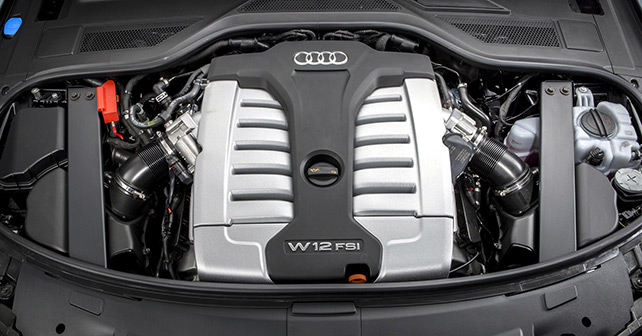
Jens travels to the Vienna engine symposium, and finds that a Lada performs better than a BMW i3… Once a year, leading engineers and executives meet in the feudal atmosphere of the Hofburg Palace in Vienna to exchange the latest trends in engine and propulsion technology. The discussions and presentations provide a glimpse of what to expect in the future, of what is possible, and what is just wishful thinking! What is said is as important as what isn’t said. This year, there was not a single lecture that dealt exclusively with electric cars. For good reason – demand in Europe is not only weak, but among private customers it’s virtually non-existent. This is with the exception of countries where these cars are heavily subsidised, like Norway. But even they are about to axe subsidies. “We are far away from profitability, and that is discounting the initial investments,” BMW development chief Klaus Fröhlich told the audience in Vienna. He painted a grim picture for upmarket battery-electric vehicles: “In the upper segment, it gets very difficult. We believe there are no satisfactory concepts, even though there are offerings in the market.” Like Tesla! He believes electrics have a place in the city: “I think we will have a variety (of powertrain choices) for a long time, but we see a ‘sweet spot’ with the urban BEV.” Like the i3? BMW’s electric “megacity vehicle” has fallen far short of predictions, with sales dropping off sharply after the initial hype. Instead of electrics, Vienna focused on improved internal combustion engines. Three-cylinder engines are now appearing even in the premium segment – they are relatively inexpensive and offer significant fuel savings compared to traditional four-cylinders. BMW is doing them, and Ford is even working on cylinder deactivation for three-bangers. And Volkswagen showcased their potential with a 1.0-liter three-cylinder, which makes a proud 272bhp – thanks to an electric compressor and turbocharging. The downsizing trend is unstoppable: “Small charged engines are gaining traction, they are losing belts and are being fitted with electric auxiliary units,” says Hans-Peter Lenz, who heads the symposium. Almost all manufacturers are experimenting with the electric compressors that effectively eliminates ‘turbo-lag,’ thus allowing the use of large turbochargers. A more questionable trend takes hold with large vehicles – they are increasingly offered with plug-in hybrid powertrains, encouraged by rigged certification rules. Here, the classic engine is coupled with an electric motor and a relatively large battery pack that can be charged externally. The technology is drawing criticism. “The plug-in hybrid is one biggest frauds on the environment, because the emissions produced during power generation are not taken into account”, says Professor Fritz Indra, a former Alpina, Audi and GM engineering executive. And Prof. Lenz points out: “Whether customers are prepared to bear the cost of hybridisation without regulatory pressure remains to be seen.” The manufacturers are desperately hoping their investment will pay off eventually. Driven by regulation, hybrid technology is big in motorsport – like Formula 1 or the 24-hours of Le Mans – but behind the scenes this regulation is being reconsidered. Perhaps the appropriate highlight of this year’s engine symposium was the VW Group’s 600-horsepower W12 bi-turbo, which combines direct-injection technology and turbocharging for the first time. Compared to the original W12 engine, which was presented in 2002, power has increased from 420 to 600 horsepower – consumption, however, has dropped by almost 30%. It is force-fed by two Bosch-Mahle turbochargers, and it produces an impressive 900Nm of torque. For a general overview, the R&D director of supplier Schaeffler, Peter Gutzmer, named three paradigmatic shifts to which the industry has to adjust. First, the efficiency increase due to (partial) electrification; second, automated driving, which can only be realized with corresponding powertrains; and, third, the incorporation of various online and web-based systems. Last year, I drove to Vienna in an electric BMW i3, fitted with a range-extender engine – a Kymco-made two-cylinder scooter engine. The electric charge lasted for barely 50% of the promised range, and the range extender required refuelling every 80 to 100 kilometres. This year, I took my hilariously out-dated new Lada Niva – a car that has been barely changed since its debut in 1977, and that is nearing the end of its life. One of the least economical cars in its segment, it was faster than the i3, and it actually used up less gas.























Write your Comment